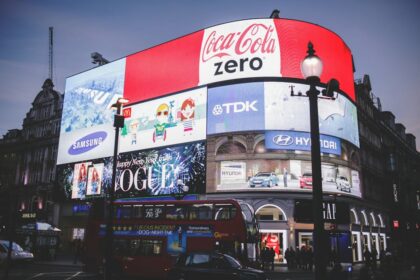The digital landscape pulsates with data, offering insights into every user interaction. Among the myriad metrics available, bounce rate and exit pages stand as two of the most frequently discussed, yet often misunderstood, indicators of website performance and user engagement. While seemingly distinct, their analysis intertwines to paint a comprehensive picture of user behavior, revealing critical opportunities for optimization. Understanding these metrics extends far beyond merely observing numbers; it necessitates a deep dive into the underlying user psychology, technical architecture, and strategic intent of a website.
Demystifying Bounce Rate: A Deep Dive into Single-Page Sessions
Bounce rate, at its core, measures the percentage of single-page sessions on a website. A “single-page session” occurs when a user lands on a page on your site and then leaves without interacting further, meaning they don’t click on any other links, trigger any events, or visit any subsequent pages within the same session. In essence, they arrived, consumed, and departed from that initial entry point. This metric is crucial because it provides immediate feedback on the initial user experience and the relevance of the landing page to the user’s expectations.
The calculation of bounce rate is straightforward: it’s the number of bounces divided by the total number of entries to the website or a specific page. For instance, if 1,000 users visit your homepage, and 600 of them leave after viewing only that page, your homepage’s bounce rate is 60%. This simplicity, however, often belies the complexity of its interpretation. A high bounce rate is frequently perceived as a negative indicator, signaling poor user experience, irrelevant content, or technical issues. While often true, this assumption requires careful contextualization.
Several key factors contribute to a page’s bounce rate, and understanding these influences is the first step toward effective optimization. Primary among these is the alignment between user intent and page content. If a user arrives via a specific search query or advertising campaign, and the landing page fails to immediately address their needs or expectations, they are highly likely to bounce. This misalignment can stem from poor keyword targeting in SEO, misleading ad copy, or simply content that doesn’t adequately satisfy the user’s initial query. Relevance is paramount; users expect immediate gratification and will quickly abandon a page that feels like a dead end or a misdirection.
Page load speed is another monumental influencer. In an age where attention spans are fleeting, every millisecond counts. A slow-loading page, even by a few seconds, can dramatically increase bounce rates. Users, accustomed to instantaneous access, will not hesitate to navigate away if content doesn’t appear swiftly. This extends beyond initial page load to the responsiveness of interactive elements. If clicking a button or filling a form incurs noticeable delays, user frustration mounts, often culminating in an abandonment. Core Web Vitals, Google’s set of metrics focusing on loading, interactivity, and visual stability, directly reflect this critical aspect of user experience and implicitly impact bounce rate. A high Largest Contentful Paint (LCP) or First Input Delay (FID) can be direct catalysts for a user’s rapid departure.
Website design and user experience (UX) play an equally significant role. An aesthetically unappealing design, cluttered layouts, confusing navigation, or excessive pop-ups can overwhelm or annoy users, prompting them to leave. Mobile responsiveness is no longer optional; a significant portion of internet traffic originates from mobile devices. If a page renders poorly, requires excessive pinching and zooming, or has elements that are difficult to tap on a smartphone, the mobile bounce rate will inevitably skyrocket. Intrusive advertisements, auto-playing videos with sound, or aggressive pop-ups that obscure content are also notorious for driving users away within seconds of arrival. These elements, while potentially generating short-term revenue, often come at the expense of a long-term, loyal user base.
Content quality and readability are foundational. Even if a user lands on a relevant page quickly, poorly written, unengaging, or difficult-to-read content will deter them. Long blocks of text without headings, subheadings, bullet points, or multimedia elements (images, videos) can make a page appear daunting and lead to users quickly scanning and then leaving. Conversely, high-quality, well-structured, and easily digestible content encourages deeper engagement, reducing the likelihood of a bounce. The clarity of the call-to-action (CTA) on the landing page is also vital. If a user is unsure what to do next or if the desired action is not immediately apparent, they may leave. A clear, compelling, and strategically placed CTA can guide users to the next step in their journey, transforming a potential bounce into a successful navigation.
Technical issues can also contribute silently but significantly to high bounce rates. Broken links, JavaScript errors, incorrect tracking code implementation (which might prematurely end a session or fail to record subsequent interactions), or server errors can all prevent users from properly interacting with a page, forcing them to abandon it. Debugging these underlying technical problems is often a prerequisite for any bounce rate reduction strategy.
Interpreting Bounce Rate: Context is King
While a high bounce rate often signals a problem, it is crucial to understand that it is not universally negative. Context is paramount when interpreting this metric. For certain types of pages or specific user intents, a high bounce rate can be perfectly acceptable, or even indicative of success. Consider a blog post designed solely to answer a specific question. A user might arrive from a search engine, quickly find their answer within the article, and then leave, having had their information need satisfied. In this scenario, a high bounce rate (e.g., 80-90%) doesn’t necessarily mean the page is performing poorly; it could signify efficient delivery of information. Similarly, a contact page where a user finds a phone number or email address, copies it, and then closes the tab might exhibit a high bounce rate, but the user’s intent was fulfilled.
Conversely, a low bounce rate isn’t always a positive sign. It could indicate misconfigured tracking, where every page view is counted as an interaction, or that users are accidentally navigating through multiple pages without engaging meaningfully. For e-commerce sites, a low bounce rate on a product page is generally good, suggesting users are exploring product details or moving toward purchase. However, a high bounce rate on a critical conversion page, like a checkout step, would be alarming, indicating significant friction in the purchase funnel.
Therefore, segmenting bounce rate data is essential for accurate interpretation. Analyzing bounce rate by traffic source can reveal if certain marketing channels are attracting unqualified visitors. Organic search traffic might have different bounce rate characteristics than social media traffic or paid ad traffic. Similarly, segmenting by device type (desktop vs. mobile vs. tablet) helps identify device-specific UX issues. Analyzing bounce rate per landing page is perhaps the most critical segmentation, allowing you to pinpoint specific problem areas within your website’s content and design. A comprehensive understanding requires moving beyond the site-wide average to granular page-level and segment-level analysis.
Strategies to Reduce Bounce Rate: Actionable Optimization
Reducing bounce rate requires a multi-faceted approach, combining technical optimizations, content enhancements, and user experience improvements. The goal is to ensure that when a user lands on a page, they are presented with relevant, valuable, and easily accessible content that encourages them to explore further.
1. Accelerate Page Load Speed: This is arguably the most impactful area.
- Image Optimization: Compress images without sacrificing quality (using formats like WebP) and implement lazy loading.
- Minify CSS, JavaScript, and HTML: Remove unnecessary characters and spaces to reduce file sizes.
- Leverage Browser Caching: Allow users’ browsers to store parts of your site, reducing load times on subsequent visits.
- Utilize a Content Delivery Network (CDN): Distribute your content across servers worldwide, serving it from the location closest to the user.
- Reduce Server Response Time: Optimize database queries, server configuration, and choose a reliable hosting provider.
- Prioritize Above-the-Fold Content: Load critical content first to provide immediate visual feedback.
2. Enhance Mobile Responsiveness and User Experience (UX):
- Responsive Design: Ensure your website adapts seamlessly to various screen sizes and devices. Test across different browsers and resolutions.
- Clear and Intuitive Navigation: Use logical menus, breadcrumbs, and internal search functionality. Avoid overly complex or hidden navigation.
- Visual Hierarchy: Use headings, subheadings, bold text, and whitespace to make content scannable and guide the user’s eye.
- Accessible Design: Ensure good color contrast, legible font sizes, and proper alt text for images to cater to all users.
- Minimize Pop-ups and Intrusive Ads: If pop-ups are necessary (e.g., for lead capture), make them non-intrusive, easy to close, and trigger them after a delay or on exit intent.
- Avoid Auto-Playing Media: Especially with sound, this is a major annoyance.
3. Refine Content Quality and Relevance:
- Address User Intent: Ensure your content directly answers the question or solves the problem implied by the user’s search query or referring link.
- Engaging and Readable Content: Use clear, concise language. Break up large text blocks with paragraphs, bullet points, numbered lists, and relevant images or videos.
- Strong, Benefit-Oriented Headlines: Capture attention and immediately communicate value.
- Internal Linking: Strategically link to other relevant pages on your site. This encourages users to explore related content, increases time on site, and distributes link equity. Ensure anchor text is descriptive and relevant.
- Up-to-Date Information: Regularly review and update content to ensure accuracy and freshness, especially for evergreen topics.
4. Optimize Calls-to-Action (CTAs):
- Clear and Concise: Users should instantly know what action you want them to take.
- Prominent Placement: CTAs should be easily visible, often above the fold, but also strategically placed throughout the content.
- Compelling Language: Use action-oriented verbs and highlight benefits.
- Visual Contrast: Make buttons stand out from the surrounding design.
- Test Different CTAs: A/B test variations in text, color, size, and placement to identify what resonates best with your audience.
5. Target the Right Audience:
- Precise Keyword Research: For organic traffic, ensure your content is optimized for keywords that accurately reflect the user’s intent.
- Refine Ad Targeting: If using paid advertising, meticulously segment your audience and craft ad copy that sets accurate expectations for the landing page. Mismatched expectations lead to immediate bounces.
- Optimize Ad Copy and Landing Page Alignment: The promise in your ad must be fulfilled by the content on your landing page.
6. Address Technical SEO Issues:
- Crawlability and Indexability: Ensure search engines can access and understand your content.
- Broken Links: Regularly check for and fix 404 errors (broken internal and external links).
- Canonical Tags: Use them correctly to prevent duplicate content issues.
- Schema Markup: Implement structured data to enhance your search presence and sometimes provide richer snippets, potentially attracting more qualified clicks.
7. Implement A/B Testing and User Feedback:
- A/B Test Page Elements: Experiment with headlines, image choices, CTA button colors, navigation layouts, and content structure.
- Heatmaps and Session Recordings: Tools like Hotjar or Crazy Egg provide visual insights into how users interact with your pages, revealing areas of confusion or ignored content.
- User Surveys: Directly ask users about their experience and identify pain points or areas for improvement.
- Analyze Search Console Data: Identify queries that lead to your page but have a high bounce rate – this can indicate a mismatch between query intent and content.
Understanding Exit Pages: Unraveling the User’s Departure Point
While bounce rate focuses on single-page sessions, exit pages provide a different yet equally crucial perspective: where users leave your website after visiting multiple pages. An exit page is simply the last page a user views during a session, regardless of how many pages they visited prior to that. Every user session will have an exit page. This metric is fundamental for understanding user journeys, identifying bottlenecks in conversion funnels, and pinpointing areas where users might be encountering friction or completing their objectives.
The distinction between bounce rate and exit pages is critical. A bounced session is, by definition, also an exited session where the entry page is also the exit page. However, not all exited sessions are bounces. If a user lands on page A, navigates to page B, then page C, and finally leaves from page C, page C is the exit page, but page A did not experience a bounce from that user. Therefore, analyzing exit pages allows you to understand the “why” behind users leaving specific points in their journey, particularly after they’ve shown some initial engagement. It helps answer questions like: “Where are users dropping off in my checkout process?” or “Which information pages are leading to user frustration?”
Analyzing Exit Pages: Pinpointing User Drop-offs
Analyzing exit pages involves more than just identifying the pages with the highest exit rates. It requires digging into the context of those exits and correlating them with user behavior preceding the exit.
1. Identify Top Exit Pages: Begin by identifying the pages on your site that have the highest exit rates. This often means looking beyond the homepage or popular landing pages, as conversion funnels typically involve a sequence of less prominent pages. Tools like Google Analytics provide reports showing exit rates for individual pages. A high exit rate on a particular page indicates that a significant percentage of visitors who reach that page are ending their session there.
2. Contextualize the Exit: Once identified, the crucial step is to understand why users are exiting these pages.
- Expected Exit Pages: Some pages are naturally high exit pages because they represent the end of a user’s journey or a successful conversion. Examples include a “Thank You” page after a purchase or form submission, a contact page where a user gets the information they need, or a blog post where the user finished reading. A high exit rate on these pages is usually desirable or benign.
- Unexpected Exit Pages: High exit rates on pages that are not intended as final destinations are red flags. This might include product pages, category pages, crucial steps in a multi-page form, or early stages of a checkout process. These unexpected exits signal a problem that needs immediate attention.
3. Map User Journeys and Conversion Funnels: Connect exit pages to your website’s intended user flows and conversion paths. Use tools like Google Analytics’ “Behavior Flow” or “Path Exploration” (in GA4) to visualize the paths users take before exiting. This helps identify where users are dropping off in critical funnels (e.g., e-commerce checkout, lead generation forms, content consumption journeys). If a high number of users are exiting from the “Shipping Information” step in your checkout process, it suggests a problem specifically with that step.
4. Leverage Qualitative Data: Quantitative data (exit rates) tells you what is happening, but qualitative data tells you why.
- Heatmaps and Click Maps: Visual representations of user clicks, scrolls, and movement can reveal if users are getting stuck, confused, or ignoring crucial elements on high exit pages.
- Session Recordings: Watching actual user sessions provides invaluable context, showing exactly what users did (or didn’t do) before exiting. You might observe users struggling with a form field, encountering a broken element, or simply becoming frustrated with the content.
- User Surveys and Feedback Widgets: Directly ask users why they left or if they found what they were looking for. This can uncover issues not apparent from quantitative data alone.
- Customer Support Logs: Analyze common complaints or questions related to the content or functionality of high exit pages.
5. Segment Exit Data: Just like with bounce rate, segmenting exit data provides deeper insights.
- By Traffic Source: Do users from social media exit from different pages than those from organic search? This can indicate different user intents or journey stages.
- By Device Type: Are mobile users exiting a particular page more frequently than desktop users? This points to device-specific usability issues.
- By User Segment: Are new users exiting different pages than returning users? This informs personalization strategies.
Strategies to Optimize Exit Pages: Guiding Users Forward
Optimizing exit pages focuses on either addressing the issues causing an undesired exit or providing clear next steps for users who have completed their primary objective.
1. Address Content and Usability Issues on Unexpected Exit Pages:
- Improve Content Clarity and Value: For informational pages, ensure the content is comprehensive, answers all potential questions, and is easy to digest.
- Enhance Page Layout and Design: Reduce clutter, improve readability, and ensure key information is easily found.
- Fix Technical Glitches: Address any broken forms, non-functioning buttons, slow-loading elements, or errors that might be frustrating users.
- Strengthen Internal Linking: Provide clear and compelling links to related content or the next logical step in a user journey. Don’t leave users in a dead end. For a product page with a high exit rate, ensure “Add to Cart” is prominent and that related products or customer reviews are easily accessible.
2. Streamline Conversion Funnels:
- Simplify Forms: Reduce the number of fields, use auto-fill where possible, and provide clear error messages.
- Clarify Progress: For multi-step processes (like checkout), use progress indicators so users know where they are and how many steps remain.
- Provide Reassurance: On critical conversion pages, include trust signals like security badges, privacy policies, and customer support contact information.
- Offer Guest Checkout: For e-commerce, forcing account creation can be a major abandonment factor.
3. Guide Users to the Next Step (Even on Expected Exit Pages):
- Clear Calls to Action: Even on a “Thank You” page, suggest further actions like “Continue Shopping,” “Explore More Articles,” “Follow Us on Social Media,” or “Share Your Purchase.”
- Related Content Suggestions: On blog post exit pages, suggest other relevant articles to encourage continued engagement.
- Exit-Intent Pop-ups (Use with Caution): These can be used to offer a discount, a lead magnet, or a survey before a user leaves. They must be implemented strategically and not aggressively, as they can also annoy users.
- Provide Customer Support Options: Ensure users can easily find help (FAQ, live chat, contact details) if they encounter an issue before exiting.
4. A/B Test and Iterate: Continually test different versions of high exit pages, focusing on elements that might reduce friction or encourage further engagement. Monitor the exit rates and conversion rates closely to measure the impact of your changes.
The Interplay: Bounce Rate, Exit Pages, and the Holistic User Journey
The true power of these metrics emerges when they are analyzed in conjunction, providing a holistic understanding of user behavior. A bounce is an instance where the entry page is also the exit page. It represents a user’s immediate rejection or satisfaction with that initial page. An exit page, however, can be any page a user views last, implying they have navigated through at least one other page (unless it was a bounce).
Consider these scenarios to illustrate the interplay:
- High Bounce Rate, High Exit Rate on Entry Page: This is a classic indication of a poor landing page. Users are arriving and immediately leaving, indicating a mismatch in expectations, slow load times, or poor design from the very first interaction.
- Low Bounce Rate, High Exit Rate on a Subsequent Page: This suggests users are engaging initially but encountering a problem or completing their goal further down the funnel. For example, a user might navigate from a product listing page to a specific product detail page (low bounce for the listing page), but then exit from the product detail page due to high pricing, lack of stock, or insufficient information.
- Low Bounce Rate, Low Exit Rate on Conversion Pages: This is the ideal scenario for conversion-focused pages, indicating users are successfully completing their intended action and moving through the funnel without significant drop-off.
- High Bounce Rate on a Blog Post, Low Exit Rate on Product Pages: This is perfectly acceptable for a content-focused site. Users find information on the blog post (high bounce), but those who are interested then navigate to product pages and convert (low exit on product pages).
By examining both metrics together, along with user flow reports, webmasters can pinpoint critical points of user attrition. Is the problem at the very beginning of the journey (high bounce rate), or are users getting stuck somewhere in the middle of a process (high exit rate on a funnel step)? This combined analysis allows for more targeted and effective optimization strategies. It shifts the focus from isolated metrics to the entire user journey, ensuring that every touchpoint is optimized for engagement and conversion.
Advanced Analysis and Tools for Deeper Insights
Beyond the basic definition and application, leveraging advanced analytics features and specialized tools can uncover granular insights into bounce rates and exit pages. Google Analytics, particularly the transition to GA4, provides robust capabilities for this.
Google Analytics 4 (GA4) Evolution:
GA4 introduced significant changes to how engagement is measured. While Universal Analytics (UA) explicitly tracked bounce rate based on single-page sessions without “interaction” (which was often defined by specific events), GA4 introduced “Engaged Sessions.”
- Engaged Sessions: A session is considered “engaged” if it lasts longer than 10 seconds, has a conversion event, or has 2 or more page/screen views. This is GA4’s primary indicator of user quality and engagement.
- Bounce Rate in GA4: GA4’s bounce rate is the percentage of sessions that are not engaged sessions. So, if a user spends 15 seconds on a page, even without clicking, it’s not a bounce in GA4, assuming no other interaction criteria. This fundamentally alters the interpretation. A higher bounce rate in GA4 might signify less attention, but it’s crucial to understand the “engaged session” definition first. This new approach pushes marketers to focus on meaningful engagement rather than just page views.
- Path Exploration: This powerful GA4 report allows you to visualize the paths users take through your website, both forward and backward. You can select an entry point or an exit point and see the preceding or subsequent steps users took. This is invaluable for identifying common exit paths from crucial pages and understanding what led users to abandon the site.
- Funnel Exploration: For defined conversion funnels (e.g., checkout, signup), this report allows you to visualize each step and the drop-off rates between steps. This directly helps identify high exit pages within a multi-step process.
- User Journey Reports: GA4’s event-based model allows for more flexible reporting on user journeys, tracing how users move through a series of defined events, offering a more nuanced view of engagement than traditional page-based tracking.
- Custom Reports and Segments: Both UA and GA4 allow the creation of custom reports and the application of segments (e.g., traffic source, device, user type) to slice and dice bounce rate and exit page data, revealing specific patterns for different user groups.
Beyond Google Analytics:
While GA is foundational, other tools offer complementary insights:
- Heat Mapping Tools (e.g., Hotjar, Crazy Egg, Microsoft Clarity): These tools visually represent where users click, scroll, and move their mouse on a page.
- Click Maps: Show which elements are being clicked (and which are being ignored). If a prominent CTA has few clicks, it could explain a high bounce rate or an undesired exit.
- Scroll Maps: Reveal how far down users are scrolling. If users aren’t reaching important content or CTAs below the fold, it’s a critical insight.
- Move Maps: Track mouse movements, often correlated with eye movement, indicating user attention.
- Session Recording Tools: These tools record actual user sessions, allowing you to watch anonymous replays of how users interact with your site. This is invaluable for seeing firsthand where users get confused, encounter errors, or struggle to find information before abandoning a page. You might observe users trying to click non-clickable elements, struggling with form fields, or hitting the back button repeatedly.
- A/B Testing Platforms (e.g., Optimizely, Google Optimize – conceptual, as it’s sunsetting): These platforms allow you to create different versions of a page or element and split traffic between them to see which performs better on key metrics like bounce rate, exit rate, and conversion rate. This is the scientific method applied to website optimization.
- User Survey and Feedback Tools (e.g., Hotjar Surveys, SurveyMonkey): Directly asking users for feedback on their experience can reveal qualitative insights not available through quantitative data. Questions like “Was this page helpful?” or “Did you find what you were looking for?” can provide direct reasons for exits or bounces.
- Technical SEO Crawlers (e.g., Screaming Frog, Sitebulb, SEMrush Site Audit, Ahrefs Site Audit): These tools crawl your website to identify technical issues like broken links, redirect chains, slow-loading pages, and server errors that directly impact user experience and can contribute to high bounce rates and unexpected exits. A comprehensive site audit can reveal hidden technical debt causing user frustration.
Practical Scenarios and Strategic Application
Let’s illustrate with specific website types to demonstrate the nuanced application of these metrics.
E-commerce Website:
- Bounce Rate on Product Category Pages: If high, it could mean the category page is not visually appealing, product images are poor, or navigation to individual products is unclear. The user landed but wasn’t enticed to explore specific products.
- Exit Rate on Product Detail Pages: If high, investigate: Is the price too high? Is stock availability clear? Are shipping costs hidden or unexpectedly high? Is the product description insufficient? Are reviews missing? Is the “Add to Cart” button prominent and functioning? This is a critical funnel stage; an exit here means lost revenue.
- Exit Rate on Checkout Steps: This is perhaps the most sensitive. High exits on “Shipping Information,” “Payment Details,” or “Review Order” point to specific friction. Common causes include: complex forms, unexpected fees, limited payment options, security concerns, or forced account creation.
Content-Heavy Website (Blog/News Site):
- Bounce Rate on Blog Posts: Often naturally high, especially for informational queries. A user searches for “how to bake sourdough,” lands on your article, reads it, and leaves satisfied. This is a successful interaction. However, if all blog posts have high bounce rates and low engagement (time on page), it might indicate poor readability, lack of internal linking to related content, or the content not fully addressing the user’s query.
- Exit Rate on Article Pages (especially if it’s the 3rd or 4th page visited): If a user reads multiple articles and then consistently exits after a specific article, analyze that article. Is it the end of a series? Or is it a weak article that doesn’t encourage further exploration? Are “related articles” suggestions poor or non-existent?
Lead Generation Website:
- Bounce Rate on Landing Pages: Critically important. If high, the landing page is failing to convert cold traffic. Reasons could be: misaligned ad copy, irrelevant content, too many form fields, unclear value proposition, or slow load speed.
- Exit Rate on Form Pages: If a user starts filling out a form but then exits, analyze the form itself. Is it too long? Are fields confusing? Are there validation errors? Is privacy messaging clear? This indicates a user who was interested but encountered friction at the conversion point.
Future Trends and Holistic Optimization
The analysis of bounce rate and exit pages is not a static exercise but a continuous process of optimization. As user behavior evolves and analytics platforms become more sophisticated, our approach must adapt. The emphasis is increasingly shifting from individual metrics to a holistic understanding of the user journey and overall business goals.
- Focus on Value, Not Just Vanity Metrics: While bounce rate and exit pages are important, they are means to an end. The ultimate goal is to drive conversions, build brand loyalty, and deliver value to users. Don’t optimize for a lower bounce rate if it means sacrificing meaningful engagement or conversions.
- AI and Predictive Analytics: Advanced analytics platforms are starting to leverage AI to predict user behavior, identify patterns in large datasets, and even suggest optimization opportunities. This will make the process of understanding user journeys more proactive.
- Privacy-First Analytics: With increasing privacy regulations (GDPR, CCPA), the way data is collected and analyzed is changing. Marketers must ensure their analytics practices are compliant, maintaining user trust while still gaining valuable insights.
- Personalization: Leveraging insights from bounce rate and exit pages can inform personalization strategies. If a segment of users consistently exits from a particular product page due to price, you might offer a targeted discount or a different product recommendation upon their next visit.
- Continuous Feedback Loop: Implement a continuous cycle of analysis, hypothesis, testing, and iteration. Website optimization is an ongoing journey, not a one-time fix. Regularly review your analytics, identify new patterns, and experiment with solutions.
In conclusion, bounce rate and exit pages are indispensable metrics for anyone managing a website. They offer complementary views into user behavior: bounce rate reveals initial engagement, while exit pages pinpoint the culmination of a user’s journey. By diligently analyzing these metrics, understanding their nuances, and applying actionable optimization strategies, businesses can significantly enhance user experience, improve conversion rates, and ultimately achieve their digital objectives. The journey to a truly optimized website is paved with data-driven decisions, and the insights gleaned from understanding where users arrive and where they depart are fundamental to that path.











